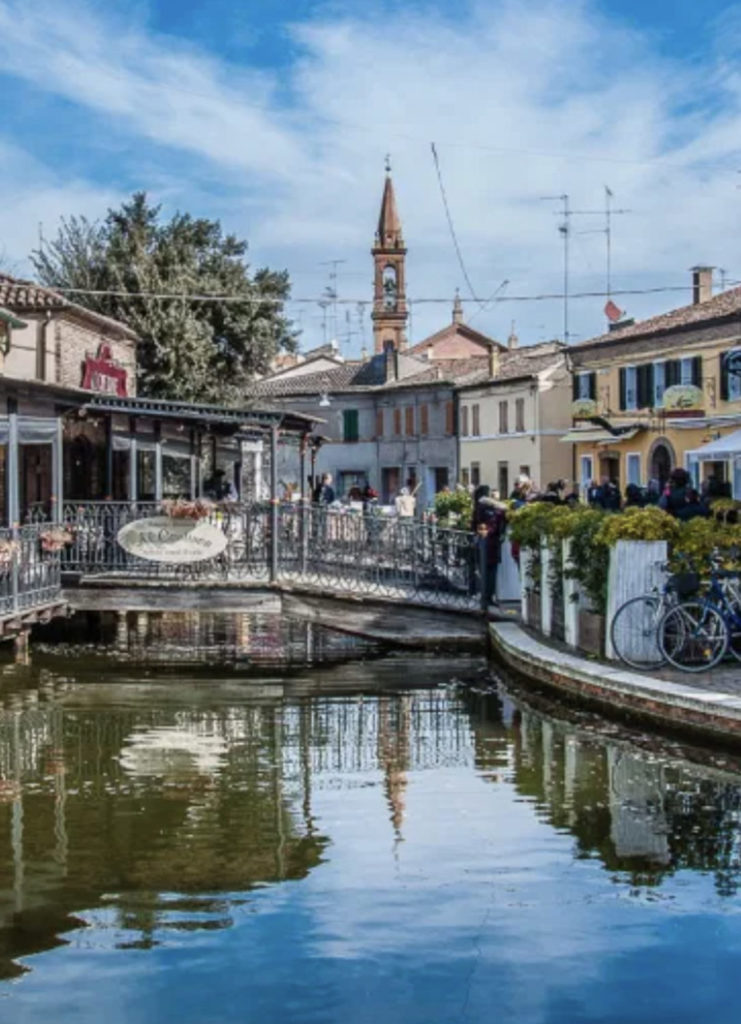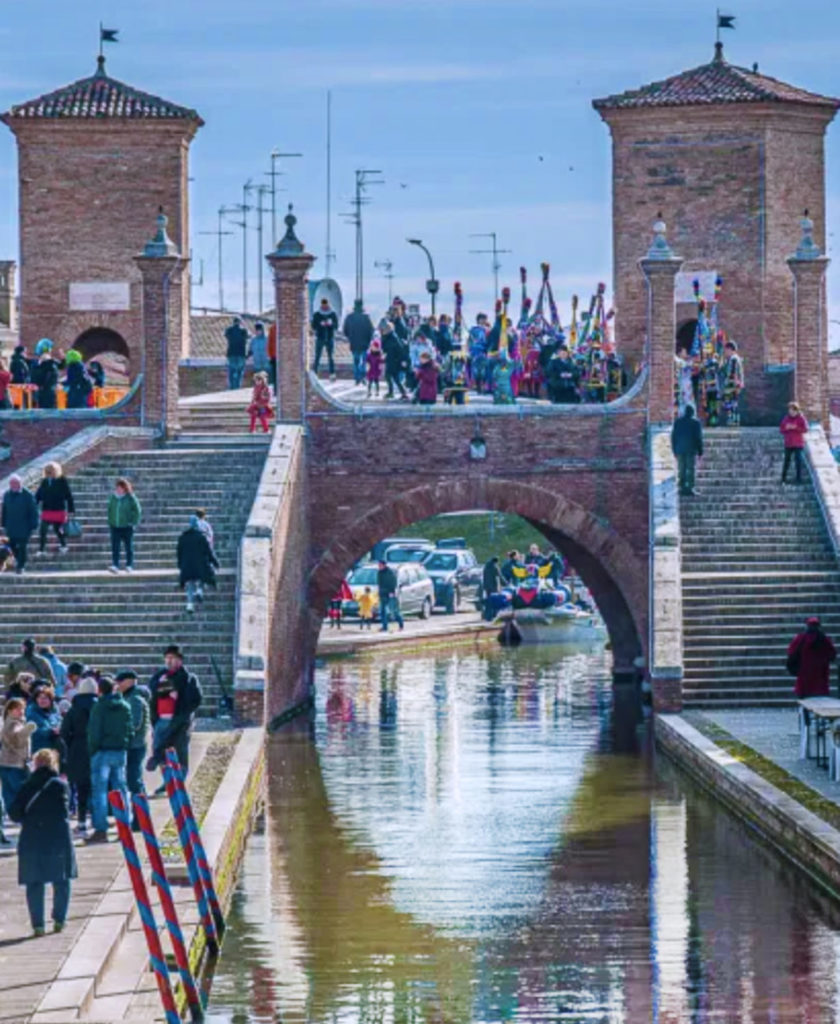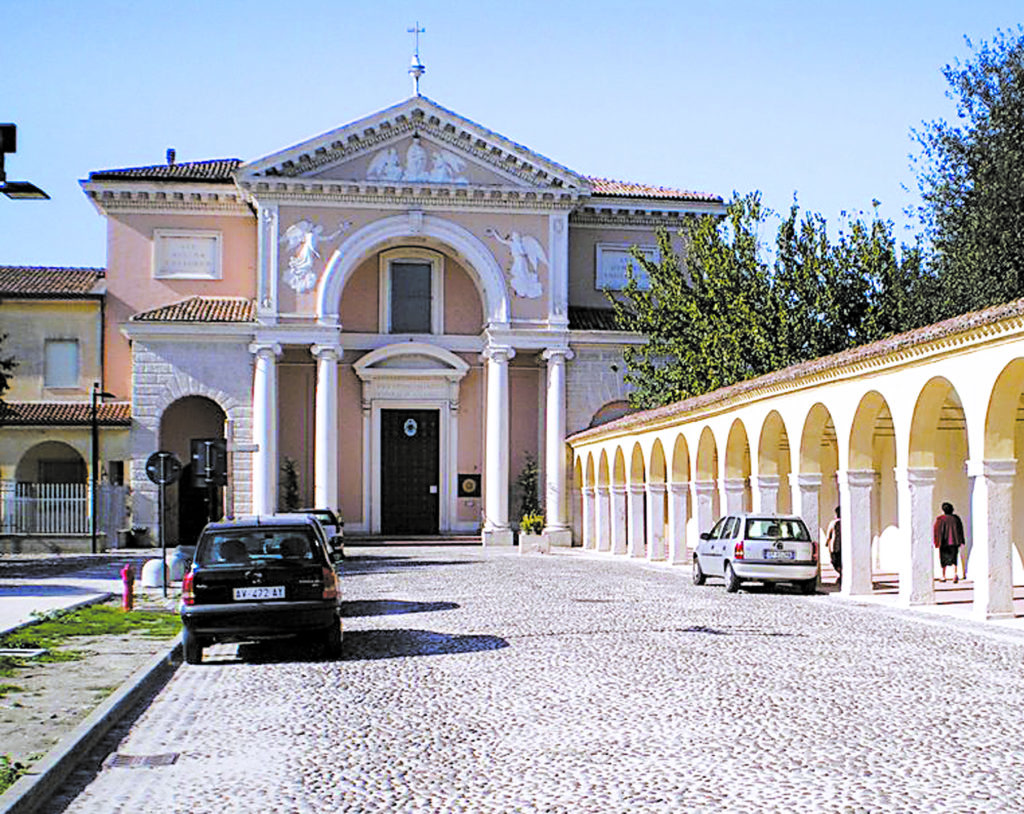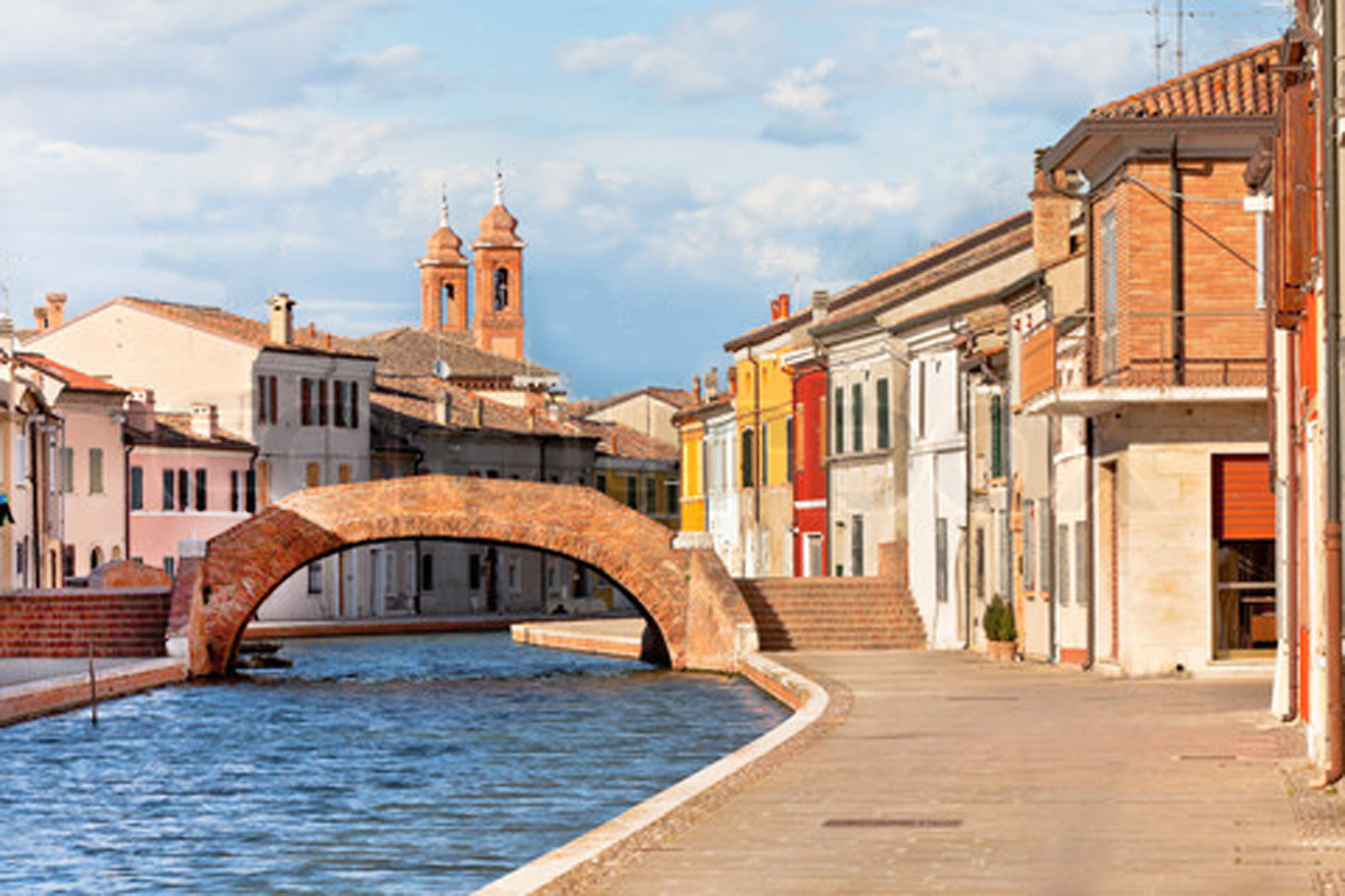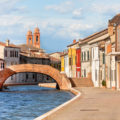While there is no city quite like Venice, the enchanting lagoon town of Comacchio in the region of Emilia Romagna is often referred to as ‘Little Venice.’ Comacchio is neat and unfeigned, endowed with a vitality that comes from a strong respect for its own history and the environment that surrounds it. A treasure chest of natural beauty and reminders of its history, Comacchio, now known as the capital of the Po Delta Park, is a little town that was born and still lives between the land and the water.
Comacchio is situated on 13 islets in a lagoon north of the present mouth of the Reno River. It was first settled by the Etruscans and then the Romans, who claimed part of the land and used it for their summer houses in the country. Goths and Lombards then invaded the area until mosquitoes gained dominion by spreading malaria. Today, Comacchio is best known for its Venice-like feel and attracts tourists from all over the world.
The town is also home to one of the newest Carnevale traditions of Italy. Its Carnivale on the Water is a magical mix of imagination that bursts forth from its participants who are the true soul of the event. Boats that normally ply the canals are transformed into works of art based on tradition and allegorical stories. The colorful water parade that caps the Carnevale is a lavish mixture of color, sound and celebration.
The skill of the craftsmen gives life to the distinctive settings and characters where the boats, each with its own theme, glide along the waters of the historic center, where everyone feels like they are part of a centuries-old tradition.
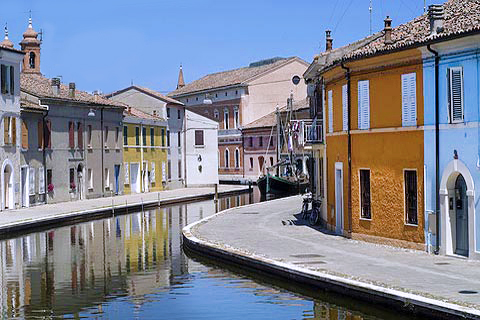
The Carnivale, barely a decade old, has become an event that draws visitors from all over Italy. Each year, more and more international tourists attend to see the family-oriented entertainment, where the days and nights are filled with the music of shows, dances and theater that wind through the streets of the historic center.
The best views in Comacchio are from the Ponte degli Sbirri. On one side is the historic Ospedale degli Infermi and on the other, the 19th century Palazzo Bellini and the famous Trepponti, a symbol of the city, a fortified structure with two towers built in 1634 to prevent flooding from water as well as to watch for attacks from pirates. The bridge spans four canals and has five broad flights of stairs. From the vantage point on top of the bridge there is a great view of the old fish market and the Roman Ship Museum, which displays cargo and tools used on a first century BC nautical vessel.
The Loggiato dei Cappuccini, a tunneled path that runs throughout the town, is the longest in Italy and leads to the Church of Santa Maria in Aula Regia. From the loggiato, which translates to open gallery, visitors can access the historic Manifattura dei Marinati, a pickling center where the city’s most famous delicacy, eel, is cooked, marinated and preserved. Within the building is the sala dei fuochi or hall of fires, which features 12 stoves where the eels are roasted on spits before being marinated. Close by is the graceful 17th century fish market, which attests to more seaborne activity and still sells the daily catch.
Important historic buildings also include the ancient Cathedral of San Cassiano, with its beautiful 18th century bell tower; the Loggia del Grano, built in 1621 as a site to store grain and was later transformed into a marketplace and the Torre dell’Orologio or Clock Tower, first built in the 14th century and reconstructed in 1842.
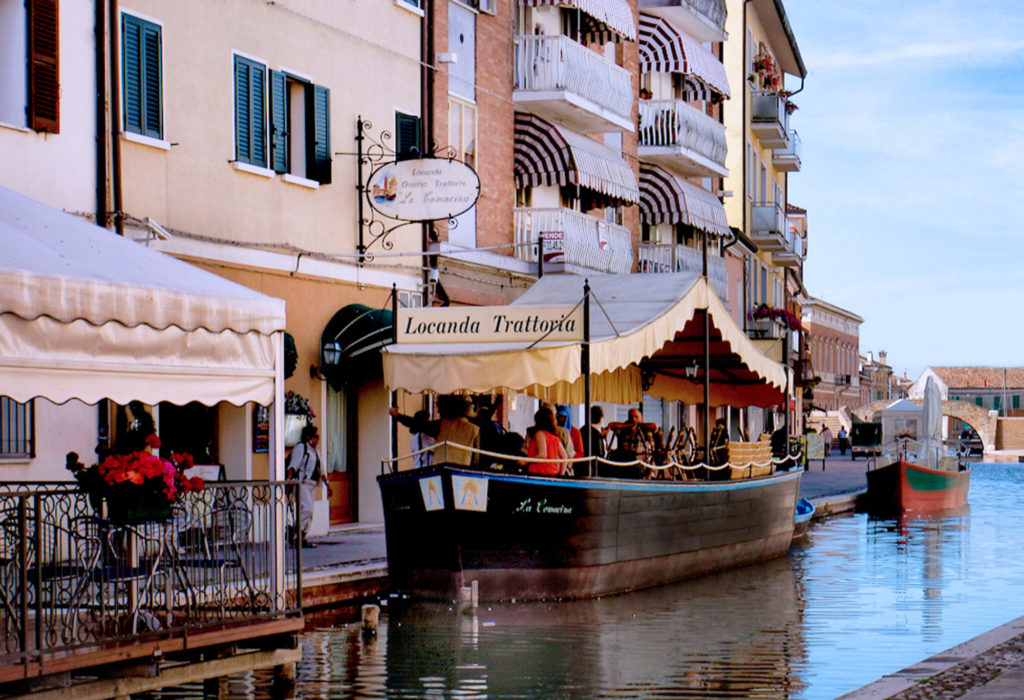
In the late afternoon, when sunset paints extraordinary colors across the sky, the nature reserve of Comacchio’s lagoons just south of the old town takes on its most fascinating appeal. A trip by motorboat is a journey into history and allows visitors to feel the atmosphere of the lagoon with its casoni or fishing huts and workshops/storehouses called tabarre, as well as the traditional fishing equipment and unusual vegetation. Bird watching is a particularly attractive activity here.
The eel rules the dining table in Comacchio, sometimes combined with other seafood and cooked in a thousand ways. Antipasti made with cappe sante (scallops), canocchie (mantis shrimp) and vongole (small clams) are delicious. Traditional first courses include the fisherman’s risotto or a pasta with crabs or different kinds of prawns. A typical dish of Comacchio is an exquisite mixed grilled seafood plate with eels and polenta along with sole, mullet, brill, bream or stuffed squid. Meals are accompanied by the excellent local DOC wine, Bosco Eliceo.
The town celebrates its staple delicacy each year during the annual Sagra dell’Anguilla, a food festival centered on the eel which takes place at the beginning of October and features food stalls and themed restaurant circuits.
Comacchio is a perfect destination for nature enthusiasts, as the Po Delta Park envelops the town with its woods and lagoons. The park offers numerous excursions deep into the natural environment on public roads, cycle paths and dirt tracks.
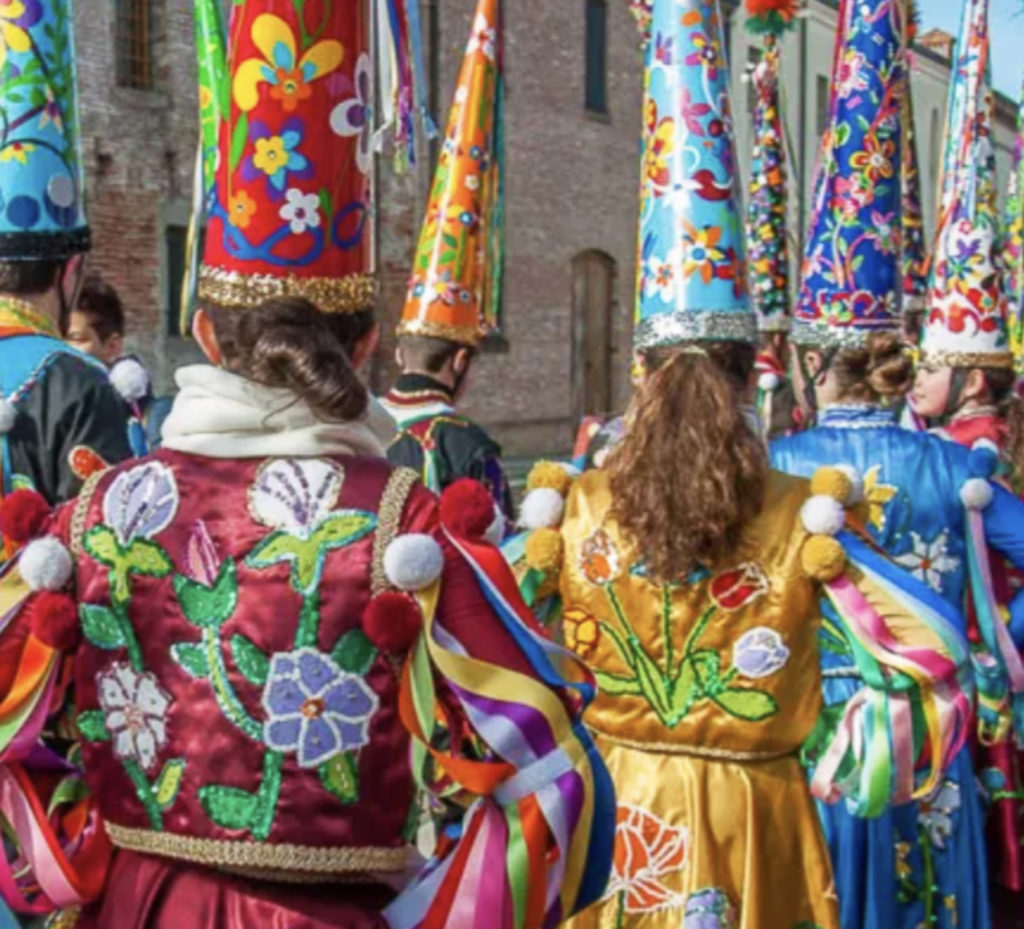
While there is plenty to do in the town itself, Comacchio is surrounded by beautiful Italian cities worth a visit. Just outside the town are the Comacchio Lagoons themselves, which can be visited by bike or boat. To the north, Valle Bertuzzi offers splendid landscapes at dusk, while the woodlands at Mesola and Santa Giustina are ideal for a cool evening walk among the green leaves after a day at the beach. A short distance away is Ravenna with its splendid mosaics and also close by is the UNESCO World Heritage City of Ferrara, where visitors can see the Este’s Castle, walk through its charming narrow medieval streets or take a bike ride around the imposing Renaissance walls.
With its delicious cuisine, historic sites and dozens of quaint little bridges waiting to be crossed, why not venture to Comacchio and explore ‘Little Venice.’
